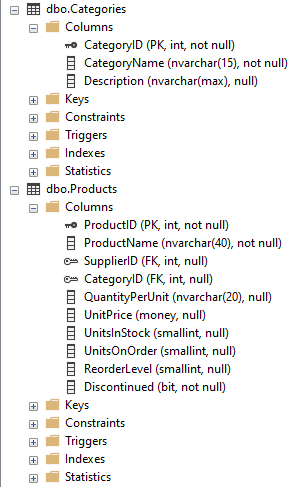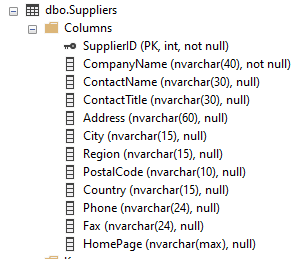Question
Microsoft SQL Server Management Studio: I've finished Queries 1-3, I just need help with the correct syntax for Query 4 as I am receiving the
Microsoft SQL Server Management Studio:
I've finished Queries 1-3, I just need help with the correct syntax for Query 4 as I am receiving the error:
"Column 'Suppliers.CompanyName' is invalid in the select list because it is not contained in either an aggregate function or the GROUP BY clause."
I've included the schema and the query I built off of (that returned correct values) for reference.
-----------------------------------------------------------------------------------------------------------------
Query 3. Copy the statement of Query 2 and modify it to display SupplierID and Avg_UnitPrice of suppliers whose average unit price is ranked #1 and #2 (i.e., the highest two averages). Hint: 3 suppliers
Query 4. Copy the statement of Query 3 and modify it to display the same output plus two more columns: CompanyName and Phone of each included supplier. Hint: 3 suppliers, join Suppliers table
------------------------------------------------------------------------------------------------------------------
Your SELECT statement for Query 3:
SELECT TOP 3 SupplierID, AVG(UnitPrice) FROM Products GROUP BY SupplierID having AVG(UnitPrice) BETWEEN 15 and 22 order by AVG(UnitPrice) DESC;
Your SELECT statement for Query 4:
SELECT TOP 3 p.SupplierID, AVG(p.UnitPrice), s.CompanyName, s.Phone FROM Products p JOIN Suppliers s ON p.SupplierID = s.SupplierID GROUP BY p.SupplierID having AVG(p.UnitPrice) BETWEEN 15 and 22 order by AVG(p.UnitPrice) DESC;


Step by Step Solution
There are 3 Steps involved in it
Step: 1

Get Instant Access to Expert-Tailored Solutions
See step-by-step solutions with expert insights and AI powered tools for academic success
Step: 2

Step: 3

Ace Your Homework with AI
Get the answers you need in no time with our AI-driven, step-by-step assistance
Get Started


